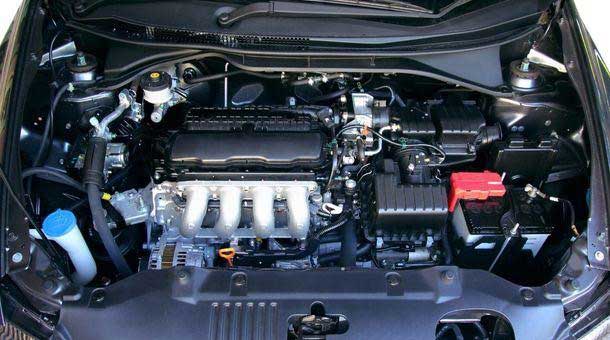It’s not just enjoyable to comprehend the way something functions, but it makes it simpler to pinpoint and repair problems. This is particularly true for automobiles, so the more you understand what’s happening under the hood, the more you’ll know.
How Much Do You Know About Car Engines
How Do Car Engines Work?
The ease of turning the key to start a car is why engines are usually assumed to be a given. Many drivers don’t think about the technology underneath the hood when they drive from A to B, yet the engine is an impressive achievement in engineering.
Engines depend on internal combustion. Small controlled explosions create energy. This is due to sparking the mixture of fuel and air in the various cylinders in the vehicle. This process happens hundreds of times per minute, which allows the car to move.
The method of powering the engine is known as”the combustion cycle. It is mostly made up of four stages or strokes (hence the name four-stroke engine).
These are intake and compression, combustion and exhaust. In the next section, we’ll take an in-depth look at how these strokes are connected to the combustion process of the car’s engine.
Intake:
As the pistons go up and down in line according to the movement of the crankshaft, enter the valves mounted in the camshaft. When the piston is moving down, the timing belt spins the camshaft, which causes the valves to open and let out the fuel-air mixture. This is known as intake.
Compression:
The compression motion occurs when the piston rises by pushing the mixture of air and fuel into a tightly-packed space.
Combustion:
Just as the piston is moved down, the spark is produced by the spark plug sparking the mixture of fuel and air, producing a small explosive blast. This causes the piston to fall quickly, generating energy that powers the engine.
Exhaust:
When the piston is at its lowest point, it opens the exhaust valve. As the piston goes back upwards, it releases the gasses released by the explosion into the valve for exhaust. Then, the exhaust valve is shut at the top, and the process continues.
This combustion process occurs in a single cylinder of an internal combustion engine with four strokes. Naturally, cars come with many cylinders of various capacities, in addition to various layouts and configurations based on the car’s model and power output.
Common Car Engine Layouts
Automobile manufacturers employ different layouts of cylinders for specific engines, mostly for increasing power or ensuring that the engine can fit into an area of tightness underneath the bonnet. This article will examine the most popular engine cylinder layouts for cars.
1: Straight
In a straight engine, the cylinders are placed in a straight line that runs parallel to the automobile from forward to back. This arrangement permits more cylinders. Straight engines are usually used in saloons with powerful engines like BMW or Mercedes.
2: Inline
Inline layouts are the arrangement of the cylinders parallel to each other in a proper arrangement in the area of the engine parallel to the vehicle.
This makes it possible to build a small engine that is small and compact, along with additional components (radiator and battery, as well as a cooling system, etc.) placed around the exterior of the. These are by far the most popular kind of engine and can be found on a lot of hatchbacks as well as small family vehicles.
3: V-shaped engine
A V-shaped engine refers to the form in which the cylinders are placed in front. The cylinders inside the V engine are positioned on their sides at a 60deg angle, having two rows facing the outside with an engine crankshaft located at the bottom of the V-shaped. Since it’s possible to fit many cylinders on an engine designed in a V shape, they are often found in luxury cars and other high-end vehicles.
4: Flat
Flat engine layouts are where the cylinders are placed horizontally, with two rows facing the outside. While not standard flat engines are highly regarded as they provide a low centre of gravity inside engines, which improves handling.
One of the most prominent producers of flat engine cylinders is Porsche, which uses a flat engine in its renowned 911 sports car.
Configurations of Engine Cylinders
In the past, the larger the number of cylinders an automobile had, the better performance it would have – however, this is no longer the case.
The advancement of powerful fuel injection systems and turbochargers means that cars with smaller cylinders can now beat larger engines. Here, we take an in-depth look at the most common engine cylinders and the types of vehicles they’re likely to be seen.
1: Twin-Cylinder
Twin-cylinder engines are rare because they provide the lowest energy output and a limited capacity. But some manufacturers now use turbochargers to make tiny, eco-friendly twin-cylinder engines. For instance, the Fiat TwinAir is a great example and is used on cars like the Fiat 500 TwinAir and Fiat Panda Aria. Fiat Panda Aria.
2: Three-Cylinder
Three-cylinder engines are commonly found on small vehicles. However, the advent of turbochargers has resulted in them appearing in larger hatchbacks for families like Ford Focus.
Ford Focus. Three-cylinder engines emit a distinct roar and are well-known for their shuddering sound due to the irregular number of cylinders that affect the balance of the engine.
Four-Cylinder
The most popular design, four-cylinder engines, can be used in most mid to small-sized automobiles. They are always designed in an inline arrangement. Four cylinders provide a substantial amount of output from the engine and can be made extremely powerful by introducing turbochargers.
3: Five-Cylinder
Five-cylinder engines are scarce and experience similar vibrations to those of a three-cylinder motor. Volvo is one company that frequently uses five-cylinder engines because the car’s comfort and luxury neutralize the vibration effects.
4: Six-Cylinder
Six-cylinder engines are commonly found in high-end sports and performance automobiles and are typically mounted with a straight or V engine arrangement. In the past, engines with six cylinders were not considered very powerful. However, thanks to turbochargers that they’re fitted to, they’re found on some of the most powerful vehicles.
5: Eight Cylinders
Cars with at least eight cylinders are classified as supercars due to their enormous capacity and power output. They are typically set up in a V-shaped configuration and are referred to by the numbers V8, V10, or V12. Up until recently, V12 was the largest engine that was available. However, it all changed after introducing the ultra-fast Bugatti Chiron, which boasts 16 cylinders.
Common Engine Problems
With the many components performing various tasks at a whirlwind speed, in time, parts can be worn out and cause your vehicle to behave differently. These are the most frequently encountered engine issues and their symptoms:
- Inadequate compression can cause the failure of power, malfunctioning or no-start.
- A broken engine block causes excessive heat, smoke out of the exhaust or leaks of coolant, typically found by the side of the engine.
- Damaged Rings, Pistons or Cylinders You may hear rattling sounds and blue smoke from the exhaust, rough idle, or fail an emissions test.
- Wear or broken Rods, Bearings, & Pins can cause clicking or ticking sounds, low oil pressure metal shavings inside engine oil, or rattles upon acceleration.
Car engines can appear complicated, but their function is quite simple: to move your car forward. With so many parts that work together to create that motion, it’s essential to ensure that your vehicle is maintained to prolong its life.
Regularly scheduled oil changes, flushes of fluid and changing hoses and belts according to the suggested intervals is an excellent method to prevent the unfortunate event of a damaged engine.








